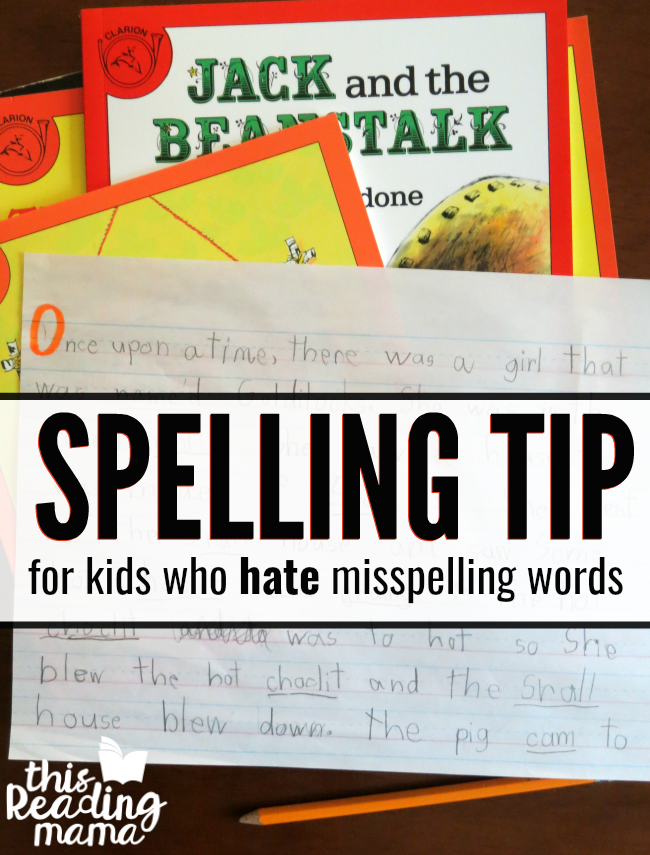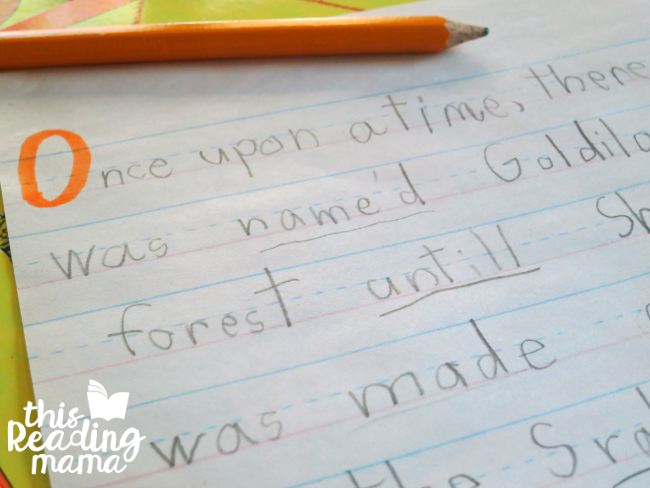Get ready for a quick spelling tip that has absolutely transformed our rough draft writing time! It’s SO simple and easy to implement.
If you’ve taught writing in any capacity, you’ve probably seen it happen.
We’re talking about that learner who absolutely hates to misspell words in her rough draft. I mean, she despises misspelling words so much that she does absolutely nothing until you come along and spell that word for her. She simply can’t move past.

And if you ask her to just try the word on her own, get ready for tears. Or utter defiance to write any.more.ever. {She may even tear her paper up. Or worse yet…throw her pencil.}
I’m sure you can tell I’ve never experienced this firsthand. Ha!
Helping Kids Spell Words
Let me first say believe wholeheartedly in teaching spelling. If you’ve read any of my spelling articles, used any of my spelling printable packs or spelling apps, you know this!
Learners should be taught spelling strategies and have access to spelling resources, like spelling charts or a sight word folder. And they should be held accountable to the spelling strategies you have taught them.
BUT, I also believe in developmental spelling, sometimes called invented spelling.
I especially believe in this because if you teach writing with multiple young children at the same time {like I always have}, you simply can’t sit there and spell every unknown word to every child. It would be all you do during writing time.
A Spelling Tip for Kids who HATE Misspelling Words
With that said, what do you do with the child who has so many ideas in her head, but hates to be wrong or misspell any words?

Simply ask your learner to try the word, then lightly underline the word in their rough draft. This is a signal to you that they need help on that word. It also lets the learner know that you care and you’re going to help at a later time.
I love this spelling tip for several reasons:
- It can help learners move on with less than perfect spellings and free up their brain to get their thoughts on paper.
- It helps learners to develop a self-awareness with their spellings.
- It can help you see what they understand or don’t understand in their spellings.
- It can GREATLY help with attitude and motivation towards writing {this is my favorite reason}.
- It gives you and your learner a starting place when editing misspellings later.
So, give it a try. I’m curious to hear how it may work for your reluctant misspeller. 🙂
You May Also Like:
Enjoy teaching!
~Becky
This is exactly what I’ve done with my kiddos, and it’s the only thing that’s helped them get their minds off those misspelled words!
Awesome! It’s amazing how one simple thing can make such a huge difference!
Thank you so much for this idea! Can’t wait to put it into practice this week with my second graders!
Awesome! 🙂